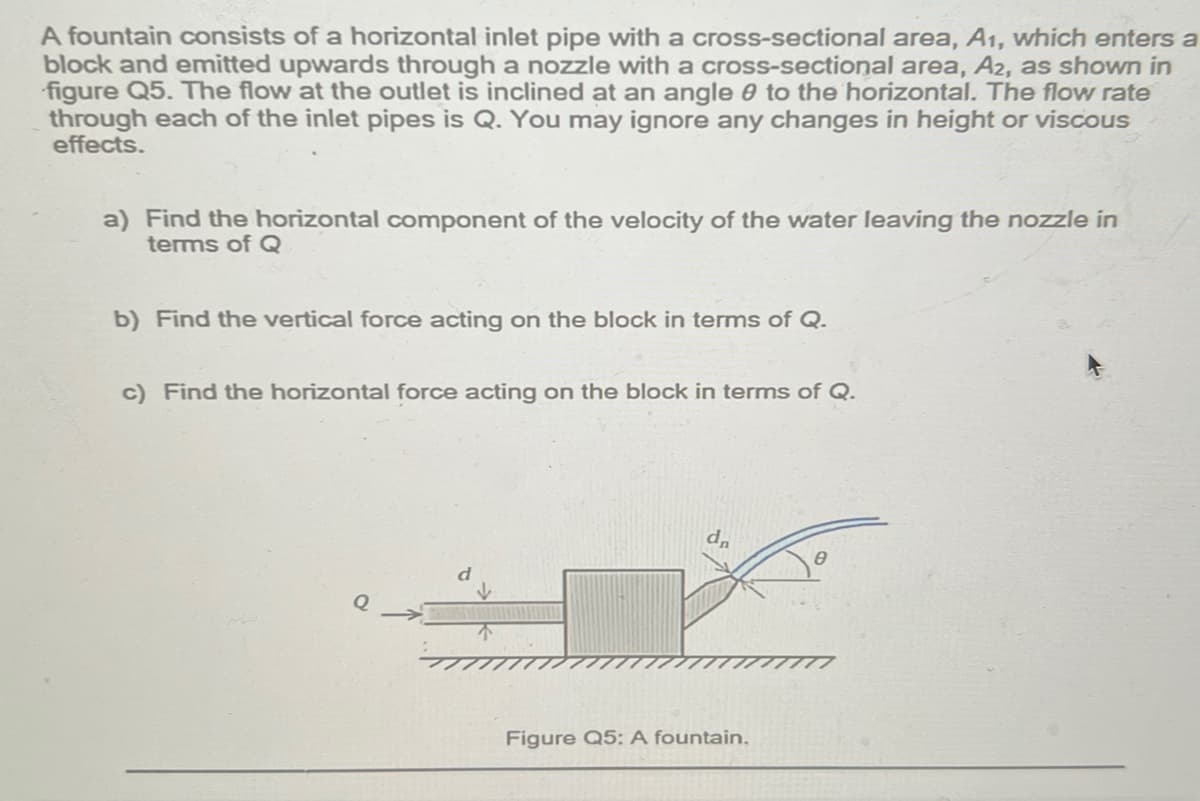A fountain consists of a horizontal inlet pipe with a cross-sectional area, A1, which enter block and emitted upwards through a nozzle with a cross-sectional area, A2, as shown figure Q5. The flow at the outlet is inclined at an angle 0 to the horizontal. The flow rate through each of the inlet pipes is Q. You may ignore any changes in height or viscous effects. a) Find the horizontal component of the velocity of the water leaving the nozzle in terms of Q b) Find the vertical force acting on the block in terms of Q. c) Find the horizontal force acting on the block in terms of Q. d Figure Q5: A fountain.
Fluid Pressure
The term fluid pressure is coined as, the measurement of the force per unit area of a given surface of a closed container. It is a branch of physics that helps to study the properties of fluid under various conditions of force.
Gauge Pressure
Pressure is the physical force acting per unit area on a body; the applied force is perpendicular to the surface of the object per unit area. The air around us at sea level exerts a pressure (atmospheric pressure) of about 14.7 psi but this doesn’t seem to bother anyone as the bodily fluids are constantly pushing outwards with the same force but if one swims down into the ocean a few feet below the surface one can notice the difference, there is increased pressure on the eardrum, this is due to an increase in hydrostatic pressure.

Step by step
Solved in 3 steps with 3 images









